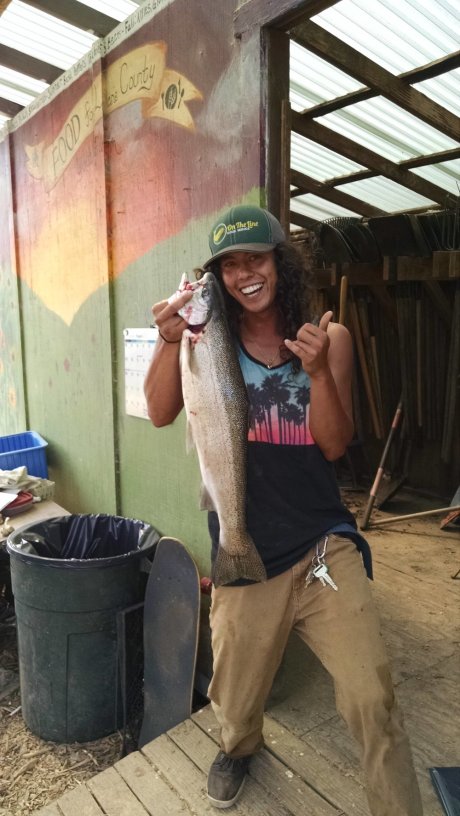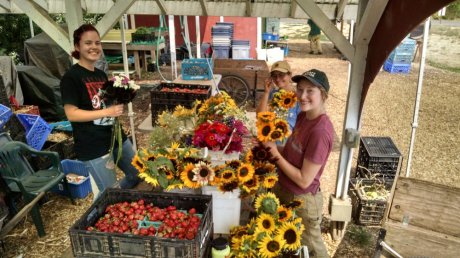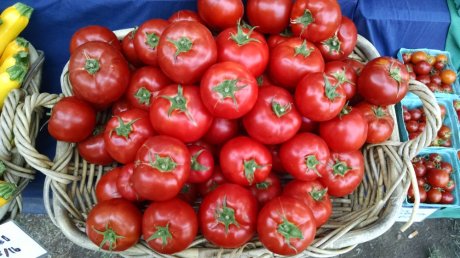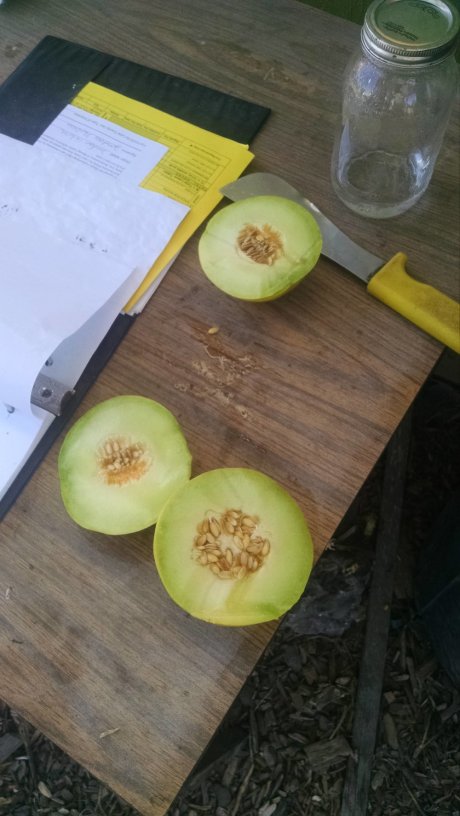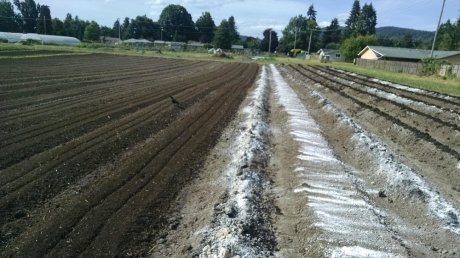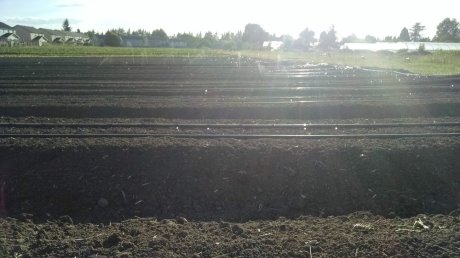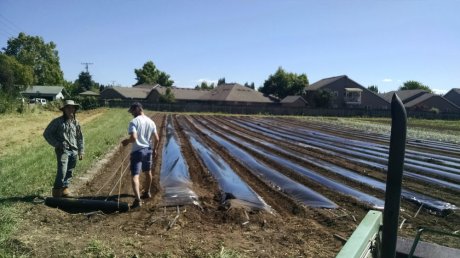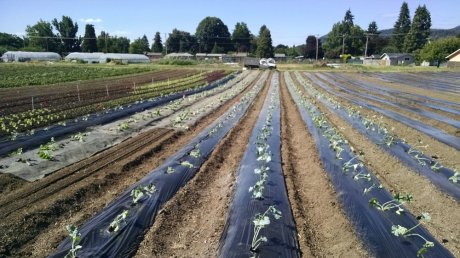“You’re having a melon morning!” I joke as I walk back toward the tool shed. I’ve left Casey near the farm stand with a pallet of cantaloupes, Israeli melons, and watermelons to wipe clean and set aside fifty more for our CSA boxes this week. First thing in the day, he got the pallet ready with empty crates and I drove it out to the melon patch, him running behind the dust and clatter of the tractor. He caught on fast to harvest: the skin color shifts from green to yellow on the green-fleshed Israeli melons, and the fruit easily falls off the stem with a small amount of pressure. We hunched down the rows, me in the cantaloupes, him in the other melons, and harvested a few crates of watermelons— which I insisted on choosing since they’re sticking to the vine even when they’re ripe— together. After a chaotic return among the hubbub of a large volunteer group of Willamalane (Springfield Parks and Rec) staff, Casey had a bucket of water, a rag to wipe down the melons, and a clear idea of which sizes to keep for CSA.
“I’m having a melon morning,” he repeats as I glance back once more. He’s crouched over the pallet, contemplating all that harvest, starting to rub the mud off each fruit, one by one.
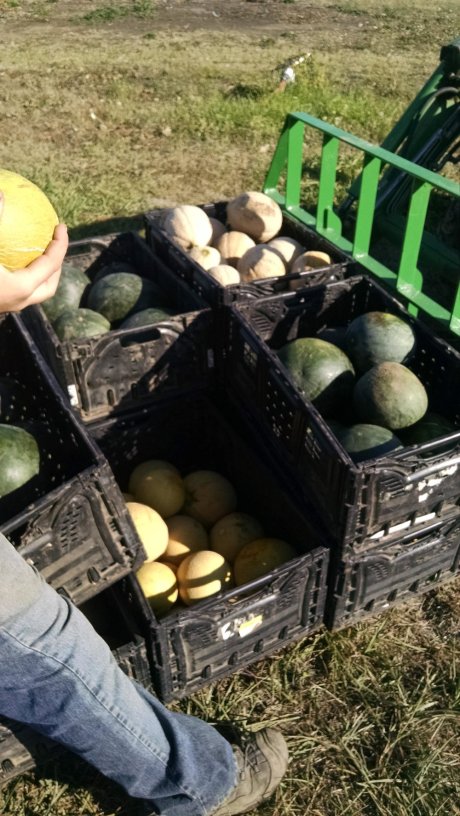
Morning melon haul
If Casey had a melon morning, he most certainly had a purple potato afternoon. Michael brought out a short pallet of Purple Viking potatoes— the kind that look swirly and cosmic on their skins— to wash after lunch, and Casey ended up spraying them for hours. Their skins started to slough off with the pressure of the water jet, so we discussed how to keep them whole and whether it’s better to get them super clean but potentially rip off some skin, or to leave all the skin and potentially some mud.
“Just ride the line,” I say. “Do your best to keep from ripping them, but we need them nice and clean.”
“Ride the line,” Casey repeats. “Okay, I think I get it.”
And I leave him to spray while I sort carrots, deliver a couple forgotten CSA totes, and sort tomatoes in the farm stand. After everyone’s left, Ted and I go to put the pallet back in our “potato bunker” (a 20-foot shipping container), and they look perfect. Swirly pink and purple skins, brown all gone, and the white spots where the skin rubbed off aren’t noticeable on the whole. Yes, he did get it: that fuzzy line I’m always drawing for people on the farm, between edible and compost, sellable and edible, too big or just right, scarred but sellable and too damaged, underripe and just ripe enough to harvest, and on and on and on. Some people are fine with ambiguity, I’ve found. They jump in, have the background experience to “get the feel” for those types of decisions. They shift their decisions just the right amount when I give feedback. Others are lost, slow down to a chug, overcorrect with feedback, and still end up with soft peppers in the market totes.
Casey’s been wanting to work in agriculture since I met him last year. Tried his hand at university but came back to Eugene to help his mom, back to the farm to learn more, earn more money, get more experience for a full-time farm job. He’s getting it. And, with so many of our youth crew missing work for various reasons, we have the money to give him more hours, keep him on through the busy fall season, give him more and more opportunities to ride that line and get the feel for everything we do out here. Melon mornings and potato afternoons might be just the experience he needs to tune his mind to high-quality food production.

